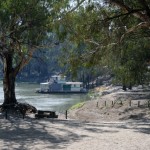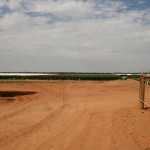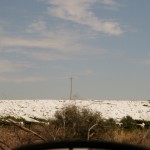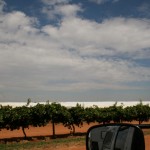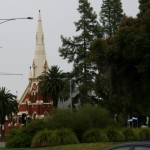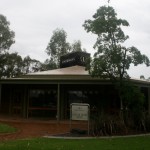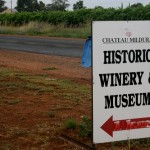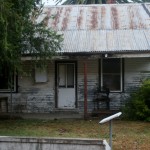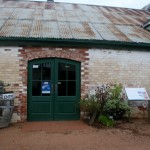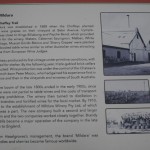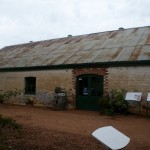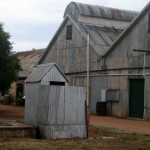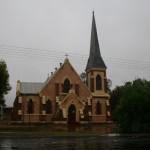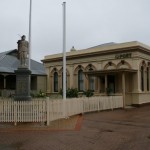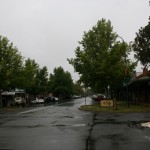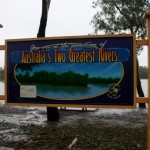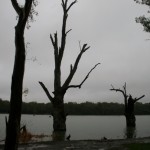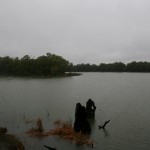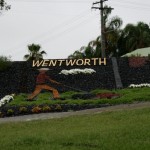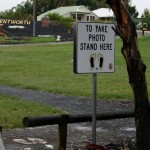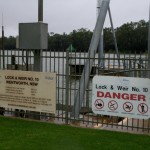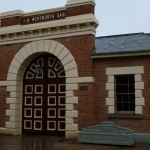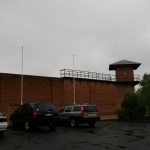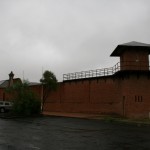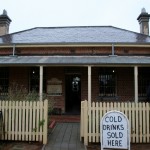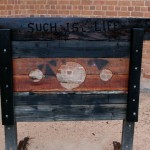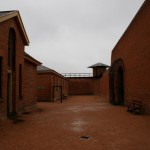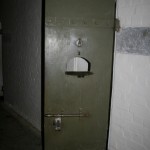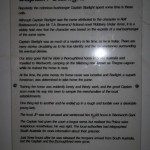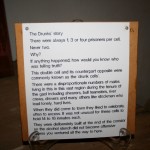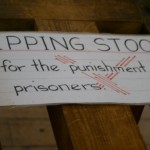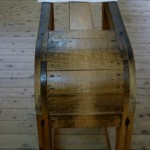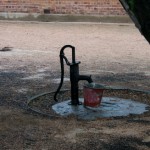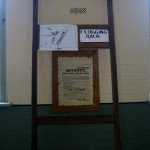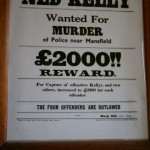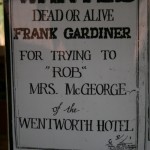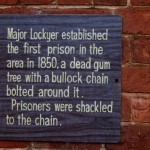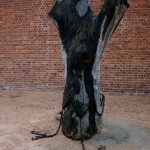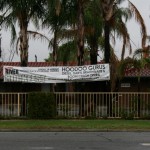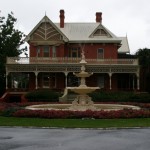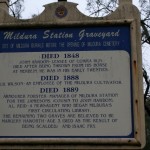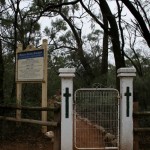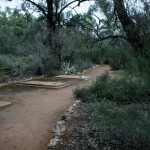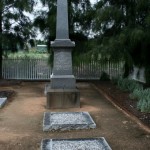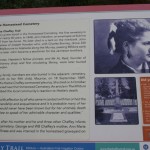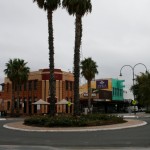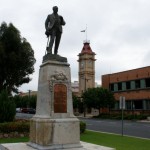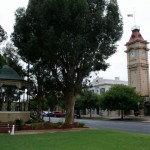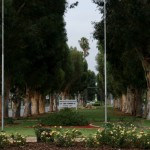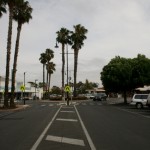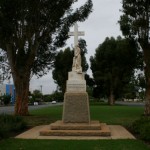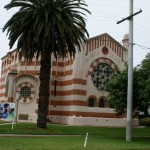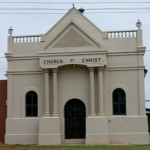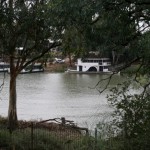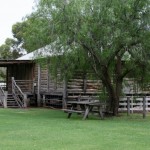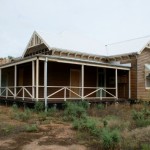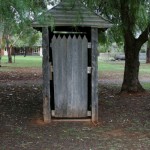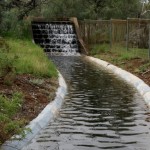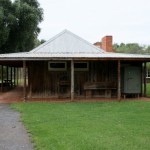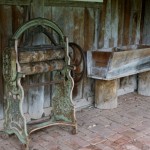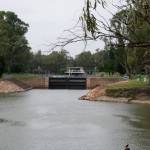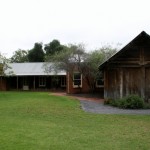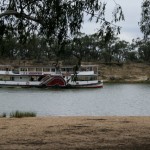Mildura (wikipedia) is a regional city in northwestern Victoria, Australia and seat of the Rural City of Mildura local government area. It is located in the Sunraysia region, and is on the banks of the Murray River. The current population is estimated at just over 30,000 in 2009.
Mildura is a major agricultural centre notable for its grape production, supplying 80% of Victoria’s grapes. Many wineries also source grapes from Mildura.
Its name is taken from the Mildura homestead, an early sheep station which covered most of the area.
There are several theories as to the origin of the name Mildura. While it was the name of the sheep station, without precedent in the English language, most historians believe it to have originated from Indigenous Australian words. However, the etymology of Mildura is not entirely certain as in several of the local dialects the words have different meanings. The word “dura” is generally thought to mean “earth”, “sand” or “rock”, at least in Latje Latje language. However, usage of the word ‘mill’ can vary in dialect and is used to mean “red” or “water”, and thus, interpretations of the name can vary from “red earth” to “water rock”.
William Blandowski’s 1857 depiction of Jarijari (Nyeri Nyeri) people including men hunting, women cooking and children playing near Merbein, Victoria. A form of kick and catch football is apparently being played in the background.
Many Aboriginal people lived around the site of Mildura because of the abundant food. Local tribes included the Latje Latje and Yerre Yerre.
The first Europeans in the area arrived in 1857 and brought sheep to graze the rich pastures.
A major drought in Victoria from 1877 to 1884 prompted Alfred Deakin, then a minister in the State Government and chairman of a Royal Commission on water supply to visit the irrigation areas of California. There he met George and William Chaffey.
In 1886 George Chaffey came to Australia and selected a derelict sheep station known as Mildura as the site for his first irrigation settlement signing an agreement with the Victorian government to spend at least £300,000 on permanent improvements at Mildura in the next twenty years
After much political wrangling, the settlement of Mildura was established in 1887. The Post Office opened on 23 January 1888.
The bar of the Mildura Working Man’s Club was noted in the Guinness Book of Records as the longest bar in the world until 1995 when it was removed during renovations.
The nearby towns of Wentworth, Gol Gol, Curlwaa and Yelta sprang up in the mid-to-late 19th century. In the 1890s came the scourge of the rabbit. This devastated the sheep farmers, especially south of the Murray. There was also a financial recession at this time. Combined, these factors restricted growth of the new settlement.
After this period, the new settlement grew and grew. It was soon the main town of the district. Suburbs and new satellite towns sprang up. From the 1920s, a number of ‘suburban’ train services were established to Merbein and Red Cliffs. These were operated by railcars.
Post war Mildura experienced a large influx of migrants particularly from Mediterranean countries including Italy and Greece. Many of these migrants were attracted by the unskilled labour offered by the fruit picking industry.
8th January, Thursday
We decided to leave Swan Hill a day earlier than we intended. Vic and Sue (friends of ours) are heading towards Tamworth for the country music festival and they want to catch up with us in Broken Hill and seeing as there is not much to do in Swan Hill we thought we would head for Mildura earlier and then make Broken Hill in time to see them. The drive to Mildura (about 200kms from Swan Hill) is mostly through Orchards (peaches, grapes, olives, plums, almonds, oranges, mandarins) it’s amazing, 200 kms of orchards. A lot of the vineyards are covered in white plastic, not sure if it’s for the birds or some other reason. Mildura produces 80% of Victorian grapes which when you see the scale of it is pretty huge. Again on the way we went into New South Wales and then back into Mildura, this seems to happen to us quite a bit as we don’t seem to able to go in a straight line and deviate a lot. We stopped for brekkie at a picnic spot along the Mighty Murray river and next stop was Mildura. The caravan park we are staying at is right on the river, lots of fishing and there are paddles steamers going up and down the river. We have a nice big grassy spot and it’s raining, OH JOY! It’s been so hot that this is such a welcome relief even poor Hugo is so happy as he has really being battling with the heat, poor boy. Tomorrow we will go and check out the town. We do know that there is a lot to do and see here apart from seeing the many wineries HAHA.
the
- Our stop over along the Murray River
- A houseboat
- A vineyard with the white plastic
- A vineyard with the white plastic – it looks like snow
- A vineyard with the white plastic – it looks like snow
9th January, Friday
It rained most of the night but at least there was no wind. Today rained most of the day off and on but it was light rain so didn’t stop us doing what we wanted to do and at least we have more energy to do stuff with the cooler weather. It’s a bit humid but not too bad. We did a little tour of Mildura town centre, this is a small city and very pretty. It’s leafy and the gardens are all so beautifully maintained. Down the main street there is quite a large island strip and it’s lined with Jacaranda and gum trees, they have made it an avenue of honour for fallen soldiers. There is one street that is lined with Oleander all in flower and all different colours, it’s quite spectacular. Mildura has the Murray river flowing through and this is the border between New South Wales and Victoria so the town is on both sides of the river and in 2 different states the same as Swan Hill and Echuca/Moama. We do like this place and of course we had to visit the wineries which is something we do well. We visited Lindemans and the place is huge as they have moved their process plant from South Australia to Mildura. They still source some of their grapes there but all vintage is made here. We visited another little Historical Vineyard (Chateau Mildura) and the wine there is made by an Italian winemaker in the Italian style. Chateau Mildura was established in 1888 and most of the original buildings and sheds are still there and the main sheds are still being used today, the place is quite charming and it is owned by a Russian family. We spent ages chatting the lady owner and of course walked out with 4 bottles of very nice Italian style wine and 2 bottles of bubbly which I will share with Sue when we get to Broken Hill. The whole of Mildura suburbs are outlined with vineyard, it’s quite amazing. We found out that the white plastic is to stop the grapes from burning as a lot of what is harvesting is for export. We visited a gem place and Ralphie was in his element. The place was huge with the amazing display of rocks, gems, jewellery etc. The jewellery was all displayed in it’s particular catergory, ie: garnets, rubies, sapphires, emeralds etc. There were precious gems and semi precious gems all cut, polished and set. We did some shopping on the way back to the park and Ralph watched the cricket and I just bummed around which is what I do well these days.
- Mildura
- Lindemans
- Chateau Mildura
- Chateau Mildura
- Chateau Mildura
- Chateau Mildura
- Chateau Mildura
- Chateau Mildura
- Chateau Mildura
Wentworth History (Taken off the Internet)
In 1829 exploration parties headed out west of Sydney towards the then unknown Murray and Darling rivers in an endeavour to discover an inland sea. Although no inland sea was found, Captain Charles Sturt, entered the headwaters of a wide river which he named the Darling. On his return to Sydney a Government conceived expedition then sent Sturt to trace the Murrumbidgee River. It was during this expedition that he entered a mighty river which he named the Murray. In 1830, while navigating the Murray, he came across a river junction which he was convinced was the Darling.
Joseph Hawdon and Charles Bonney drove cattle overland from New South Wales to Adelaide along the Murray and arrived at the Darling/Murray junction in 1838. Other overlanders followed the route, which became known as the Sydney/Adelaide ‘highway’, and the river junction spot became an established camp site known as Hawdon’s Ford. The actual junction at the time was called “The Rinty”. The settlement was later referred to as the “Darling Junction”. A number of squatters established reign over the land along the Darling and Murray Rivers, expanding their holdings westwards from the Murrumbidgee area and north eastwards from South Australia. In the mid 1840’s the settlement was known as McLeod’s Crossing”, named for the first white residents of the settlement.
With the arrival of the river steamers in 1853, the small European settlement found itself to be ideally situated as an administrative and commercial centre for the untapped wealth of the vast Outback. For many years Sydney was the only port in New South Wales to handle more cargo than Wentworth. The steamers brought a new sophistication to the rugged river towns. They carried the hopes and dreams of fragile communities for over three quarters of a century.
In 1857, Surveyor General Barney considered it time to establish a proper township. The town site was approved in 1859 and was named after the New South Wales explorer and politician William Charles Wentworth, on June 21, 1859. The area was proclaimed a municipality on January 23, 1879, and is the region’s oldest settlement.
Throughout the prosperous river trade days Wentworth Shire suffered extremes in fortune and dispair. The area suffered floods, droughts, rabbit plagues and overstocking which in turn caused erosion and land degeneration. Nonetheless, the settlements continued to thrive and grow at a reasonably rapid pace and by 1929 a series of locks and weirs, to assist navigation and pumping, had been completed on the Murray River.
In the early 1900’s the first irrigation settlement in New South Wales was commenced at Curlwaa, seven kilometres east of Wentworth. Irrigation breathed new life into the district which led to pastoral properties being divided into smaller allotments (now referred to as “blocks”) and enabled regeneration and the production of fruits and vegetables of high quality. Citrus fruits are extremely popular, but with changing market trends, the recent planting of vines to accommodate the demand for wine is staggering. There is enough wine produced locally to literally float a battleship.
An improved system of road networks, statewide rail links and motorised transport reduced the need for riverboats as a source of transportation, communication and trade, thus forcing an end to the riverboat era.
Wentworth continues to be an important centre for the surrounding landholders. It is a town steeped in history and as a tourist area of great diversity, Wentworth has much to offer including; the Junction of the Murray and Darling Rivers, Locks and Weirs, Paddlesteamers and Houseboats, Watersports, Historic Buildings, The Old Wentworth Gaol, Pioneer Museum, Aboriginal Culture and Galleries, Wineries, Perry Sandhills, Australian Inland Botanical Gardens, Mungo National Park and the Willandra Lakes World Heritage Area, unique scenery and native wildlife.
10th January, Saturday
It rained lightly all of last night and most of today as well. Things are pretty wet and the river level has risen. Some places have been flooded we have been told, it’s either feast or famine. fires one week and floods the next, that is the nature of this beautiful great land we live in. We went to Wentworth which is a little town about 30kms from Mildura. Again, the whole way is orchards and vineyards. Wentworth is a pretty little town with quite a few historical buildings. The Murray and Darling rivers join here and it’s called the Murray Darling Junction. We visited the old Goal, took some pictures, had a milkshake and headed back to Mildura. There is a market on tomorrow so we will go and spend some money, then see the rest of Mildura.
- Wentworth
- Wentworth Post Office
- Wentworth
- Captain Sturt Hotel – Wentworth
- The meeting of the Murray and Darling rivers
- The meeting of the Murray and Darling rivers
- The meeting of the Murray and Darling rivers
- The meeting of the Murray and Darling rivers
- Wentworth – how clever is this?
- Wentworth
- I did
- The meeting of the Murray and Darling rivers
- The meeting of the Murray and Darling rivers
- The meeting of the Murray and Darling rivers
- The meeting of the Murray and Darling rivers
- Wentworth Gaol
- Wentworth Gaol
- Wentworth Gaol
- Wentworth Gaol
r
- Gaolers resident – Old Wentworth Gaol
- The Stocks
- Wentworth Gaol
- Wentworth Gaol
- Wentworth Gaol
- Captain Starlight (outlaw) rears his head again. You will know who I am talking about if you have been reading our blog 🙂
- Going to make a punch of this for a party when we get home
- The consequences
- Wentworth gaol
- The front entrance – Wentworth gaol
- Wentworth gaol
- EISH
- EISH
- Exercise yard – Wentworth gaol
- A water pump in the exercise yard – Wentworth gaol
- OUCH
- I am going to copy this sign for home
- Our famous outlaw
- Wish they did this now
- For naughty bo
- For naughty boys
- They are all playing in Mildura on the 18th Jan
- Mildura
- Rio Vista House
11th January, Sunday
No rain today, it’s overcast and humid but still pretty pleasant as the humidity is not too high. We went to the market then onto the old Mildura homestead and cemetry (where a few of the Chaffey family members are buried) the small cemetry has 2 sections, one was for no family members and the other for the family. Back to base and a slow pack up as we have a long haul to Broken Hill tomorrow so want to be packed up before lights out so we can leave at sparrows in the morning. See you in Broken Hill where we will probably stay for about 2 weeks. Xxx
- Old Homestead cemetry for non family members
- Old Homestead cemetry for non family members
- Old Homestead cemetry for non family members
- Family section of the cemetery
- Family section of the cemetery
- Family section of the cemetery
- Family section of the cemetery
- Mildura
- Mildura
- Mildura Mall
- Mildura
- William Benjamin Chaffey
- Mildura
- The rotunda
- The rotunda
- Avenue of Honour
- Mildura
- Avenue of Honour
- Methodist Church
- Church of Christ
m
- Old homestead
- Old homestead
- Old homestead
- The old Homestead overlooking the Murray River
- Old homestead
- Old homestead
- Old homestead
- Every good homestead has to have one
- Old Irigation channel sourced from the Murray River
- Old homestead
- Old homestead
- Old homestead
- A boat waiting at the Lock
- Old homestead
- The view from our Caravan park
- Our little visitor


